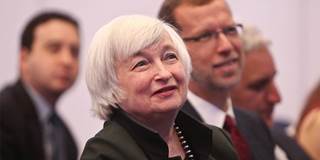The Federal Reserve’s decision to delay an increase in US interest rates should have come as no surprise to anyone who has been paying attention to Fed Chair Janet Yellen’s comments. So why did the markets and media behave as if the Fed’s action (or, more precisely, inaction) was unexpected?
LONDON – The US Federal Reserve’s decision to delay an increase in interest rates should have come as no surprise to anyone who has been paying attention to Fed Chair Janet Yellen’s comments. The Fed’s decision merely confirmed that it is not indifferent to international financial stress, and that its risk-management approach remains strongly biased in favor of “lower for longer.” So why did the markets and media behave as if the Fed’s action (or, more precisely, inaction) was unexpected?

LONDON – The US Federal Reserve’s decision to delay an increase in interest rates should have come as no surprise to anyone who has been paying attention to Fed Chair Janet Yellen’s comments. The Fed’s decision merely confirmed that it is not indifferent to international financial stress, and that its risk-management approach remains strongly biased in favor of “lower for longer.” So why did the markets and media behave as if the Fed’s action (or, more precisely, inaction) was unexpected?